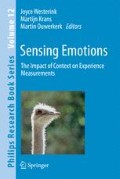Abstract
Simulator training is common for commercial pilots but not in general aviation. Since unusual flight attitudes, stalls and spins account for about one third of fatal accidents in pilots flying according to visual flight rules, the present authors are currently evaluating a simulator training program developed for this group of pilots. Our study does not only use the progress in recovering from unusual manoeuvres as criterion for training success, but also psychophysiological recordings during the actual flight manoeuvres. Based on a theoretical arousal/emotion brain model (Boucsein and Backs, 2009), heart rate, heart rate variability and various electrodermal parameters were chosen for in-flight recording in an aerobatic plane (Pitts S-2B), flown by an expert aerobatic pilot who will be the flight instructor during the test flights before and after simulator training. In the present study, psychophysiological recordings were taken before, during and after flying into and recovering from extreme pitch, overbanking, power-off full stall and spin. To control for the influence of high acceleration, G-forces were recorded by an inertial platform. Results from our expert pilot study demonstrate the usability of psychophysiological measures for not only determining stress/strain processes, but also different kinds of arousal, i.e., general arousal, preparatory activation and emotional arousal, during complex flight manoeuvres.
Access this chapter
Tax calculation will be finalised at checkout
Purchases are for personal use only
References
AOPA Air Safety Foundation: Stall/Spin: Entry point for crash and burn? In: Air Safety Foundation Special Reports, Maryland. Available online: http://www.aopa.org/asf/publications/topics/stall-spin.pdf (2003)
Boeing Commercial Airplane Group: Statistical Summary of Commercial Jet Airplane Accidents, Worldwide Operations, 1994–2003. Airplane Safety Engineering, Seattle, WA (2004)
Boucsein, W.: Electrodermal Activity. Plenum Press, New York, NY (1992)
Boucsein, W.: Psychophysiologie im Flug – eine Fallstudie. In: Richter, P.G., Rau, R., Mühlpfordt, S. (eds.) Arbeit und Gesundheit. Zum aktuellen Stand in einem Forschungs- und Praxisfeld, pp. 130–142. Pabst Science Publishers, Lengerich (2007)
Boucsein, W., Backs, R.W.: Engineering psychophysiology as a discipline: historical and theoretical aspects. In: Backs, R.W., Boucsein, W. (eds.) Engineering Psychophysiology. Issues and Applications, pp. 3–30. Lawrence Erlbaum Associates, Mahwah, NJ (2000)
Boucsein, W., Backs, R.W.: Methods and models for the psychophysiology of emotion, arousal, and personality. In: Duffy, V.G. (ed.) Handbook of Digital Human Modeling, pp. 35-1–35-18. CRC Press/Taylor & Francis, Boca Raton, FL (2009)
Burton, R.R., Whinnery, J.E.: Biodynamics: sustained acceleration. In: DeHart, R.L. (ed.) Fundamentals of Aerospace Medicine, 2nd edn, pp. 201–260. Williams & Wilkins, Baltimore, MD (1996)
Endsley, M.R.: Design and evaluation for situation awareness enhancement. Proceedings of the Human Factors Society 32nd Annual Meeting, vol. 1, pp. 97–101. Human Factors Society, Santa Monica, CA (1988)
Hart, S.G., Staveland, L.E.: Development of NASA-TLX (Task Load Index): results of empirical and theoretical research. In: Hancock, P.A., Meshkati, N. (eds.) Human Mental Workload, pp. 239–250. North Holland Press, Amsterdam (1988)
Hoffmann, J.: Vorhersage und Erkenntnis. Die Funktion von Antizipationen in der menschlichen Verhaltenssteuerung und Wahrnehmung. Hogrefe, Göttingen (1993)
Hoffmann, J.: Anticipatory behavioral control. In: Butz, M., Sigaud, O., Gerard, P. (eds.) Anticipatory Behavioral Control in Adaptive Learning Systems. Foundations, Theories and Systems, pp. 44–65. Springer, Berlin (2003)
Kallus, K. W.: Situationsbewusstsein und antizipative Prozesse. Zeitschrift für Arbeitswissenschaft, 63, 17–22 (2009)
Kallus, K.W., Barbarino, M., Van Damme, D.: Model of the Cognitive Aspects of Air Traffic Control (HUM.ET1.STO1.1000-REP-2). Eurocontrol, Brussels (1997)
Kallus, K.W., Tropper, K.: Anticipatory processes in critical flight situations. Proceedings to the 27th Conference of the European Association for Aviation Psychology, Potsdam, Germany, pp. 38–40 (2006)
Kallus, K.W., Tropper, K.: Anticipatory processes in critical flight situations. Proceedings of the 14th International Symposium on Aviation Psychology, Dayton, OH, 23–26 Apr, 2007
Koglbauer, I., Kallus K.W., Braunstingl, R., and Boucsein, W.: Recovery training in simulator improves performance and psychophysiological state of pilots during simulated and real VFR flight. International Journal of Aviation Psychology, 21 (2011, in print)
Pezzulo, G., Hoffmann, J., Falcone, R.: Anticipation and anticipatory behavior. Cogn. Process. 8, 67–70 (2007)
Acknowledgement
This research was supported and financed by the Austrian Research Promotion Agency (FFG) and the company AMT Aircraft Manufacturing Technology GmbH, Austria.
Author information
Authors and Affiliations
Corresponding author
Editor information
Editors and Affiliations
Rights and permissions
Copyright information
© 2010 Springer Science+Business Media B.V.
About this chapter
Cite this chapter
Boucsein, W., Koglbauer, I., Braunstingl, R., Kallus, K.W. (2010). The Use of Psychophysiological Measures During Complex Flight Manoeuvres – An Expert Pilot Study. In: Westerink, J., Krans, M., Ouwerkerk, M. (eds) Sensing Emotions. Philips Research Book Series, vol 12. Springer, Dordrecht. https://doi.org/10.1007/978-90-481-3258-4_4
Download citation
DOI: https://doi.org/10.1007/978-90-481-3258-4_4
Published:
Publisher Name: Springer, Dordrecht
Print ISBN: 978-90-481-3257-7
Online ISBN: 978-90-481-3258-4
eBook Packages: Computer ScienceComputer Science (R0)

